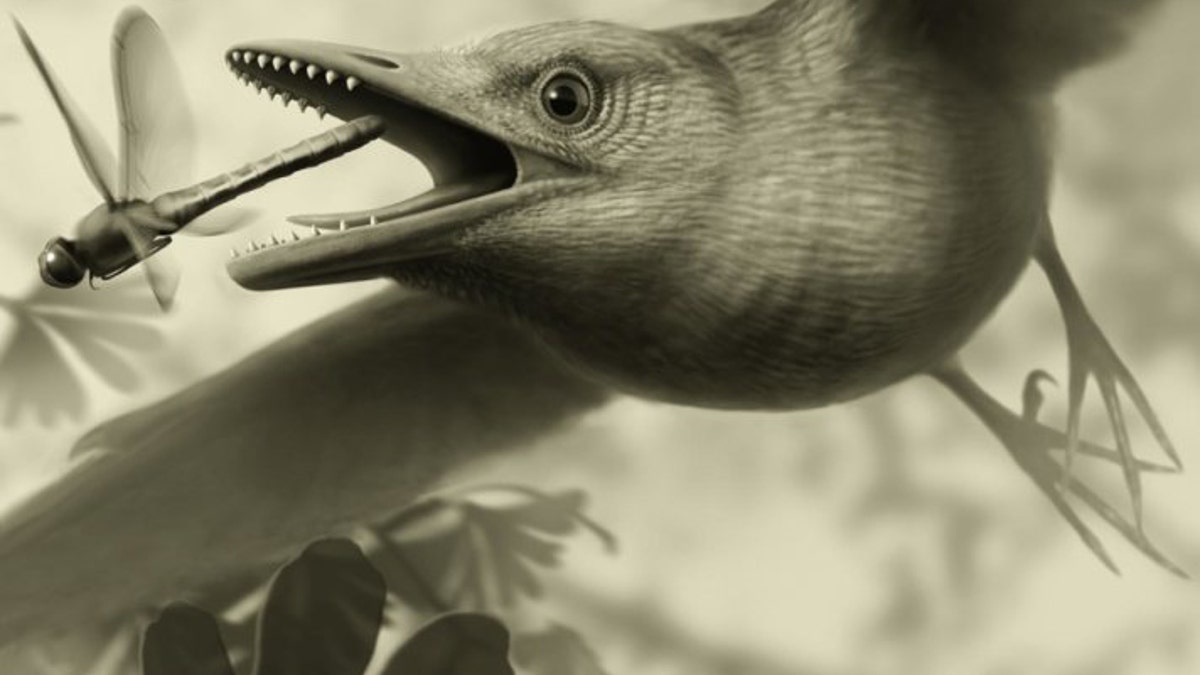
A new paper documents the intricate arrangement of the muscles and ligaments that controlled the main feathers of the wing of an ancient bird, supporting the notion that at least some of the most ancient birds performed aerodynamic feats similar to those of many living birds. (Credit: Stephanie Abramowicz)
We know some dinosaurs had feathers but there remains plenty of debate over whether prehistoric birds such as Archaeopteryx could actually take to the air and fly.
A new study in Scientific Reports goes some ways to answering that question with the discovery of new, 125-million-year-old bird from central Spain. The exceptionally well preserved fossil found in limestone from the Lower Cretaceous period has an intricate arrangement of the muscles and ligaments that controlled the main feathers of the wing of an ancient bird – the oldest occurrence of connective tissue in association with flight feathers of birds.
That would support the notion that at least some of the most ancient birds performed aerodynamic feats in a fashion similar to living birds.
Related: Giant prehistoric lizards co-existed with humans
"The anatomical match between the muscle network preserved in the fossil and those that characterize the wings of living birds strongly indicates that some of the earliest birds were capable of aerodynamic prowess like many present-day birds," said Luis Chiappe, one of the authors of the study, who is with the National History Museum of Los Angeles County, in a press release.
Guillermo Navalón, a doctorate candidate at the University of Bristol in the U.K. and lead author of the report, said he was so surprised how this ancient bird looked so similar to what we might find in our backyards.
"It is very surprising that despite being skeletally quite different from their modern counterparts, these primitive birds show striking similarities in their soft anatomy," he said, in the press release.
Related: Paleolithic hunter-gatherers loved oatmeal too
The characteristic features of birds are believed to have evolved slowly about 150 million years ago, and such things as wings and feathers developed over tens of millions of years. Since the 1990s, hundreds, if not thousands, of dinosaurs with feathers have been unearthed in China - helping firm up the theory that birds evolved from dinosaurs.
While the latest find pushes the theory that birds did fly, it remains up in the air as to whether they flew close to the ground or soared over the heads of dinosaurs.
"The new fossil provides us with a unique glimpse into the anatomy of the wing of the birds that lived amongst some of the largest dinosaurs," Chiappe said. "Fossils such as this are allowing scientists to dissect the most intricate aspects of the early evolution of the flight of birds."




















